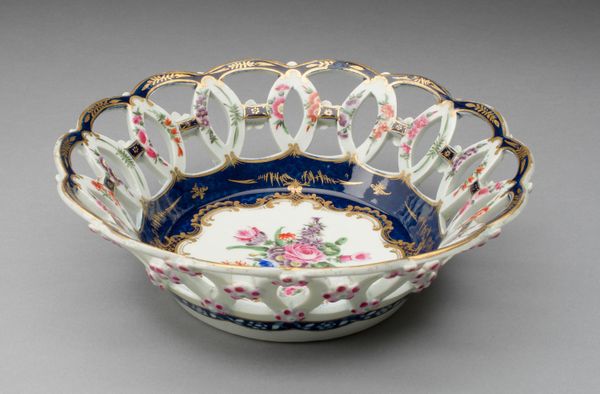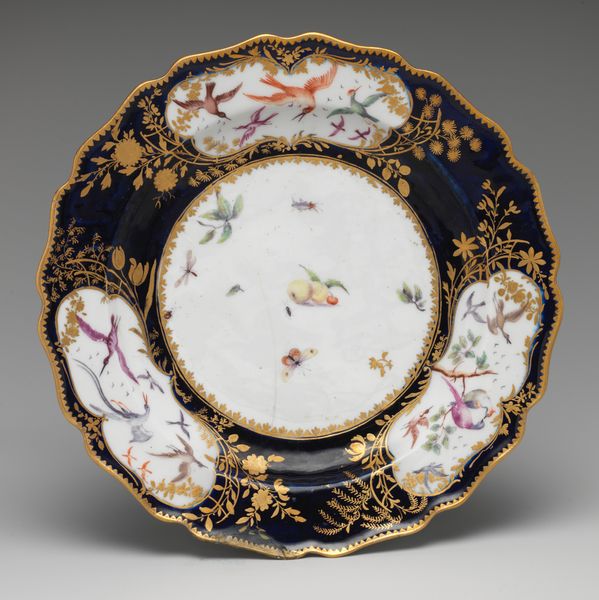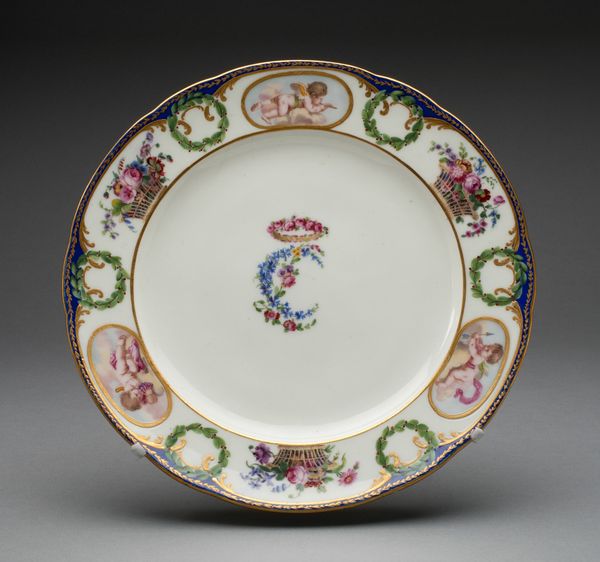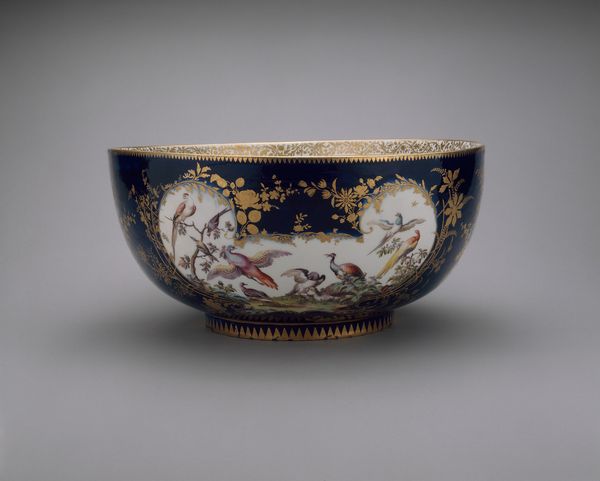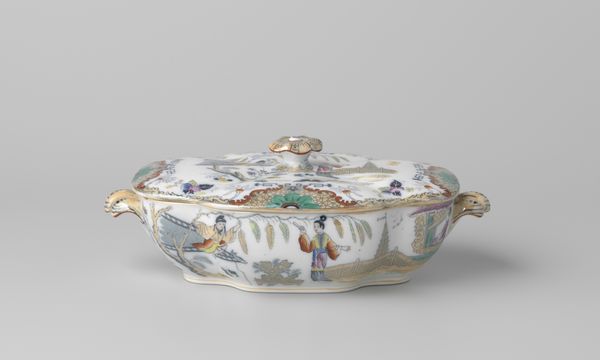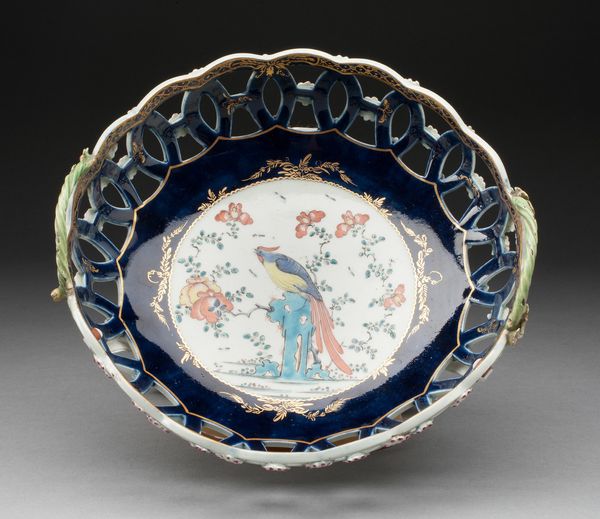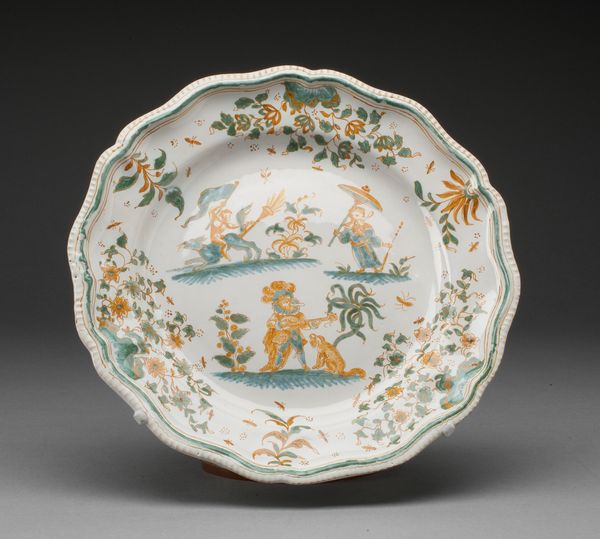
ceramic, porcelain, sculpture
#
fairy-painting
#
decorative element
#
landscape
#
ceramic
#
porcelain
#
figuration
#
sculpture
#
ceramic
#
genre-painting
#
decorative-art
#
miniature
#
rococo
Dimensions: Overall: 10 3/8 × 13 1/2 in. (26.4 × 34.3 cm)
Copyright: Public Domain
Editor: Here we have a Basin, crafted by the Chelsea Porcelain Manufactory between 1756 and 1766. It's currently held at The Met. Made of ceramic and porcelain, the overall design feels really ornate, almost excessive, with that intense blue and gold. How do you interpret the imagery at play in this work? Curator: It’s fascinating how this piece reflects the 18th-century fascination with pastoral scenes. Notice how the central image depicts figures engaged in leisurely pursuits; fishing, perhaps courtship – seemingly unaware that they are encircled, almost held captive, by the deep blue of the piece and delicate gilt foliage. Do you get the sense that these porcelain objects were mere aesthetic pieces for the upper classes to display in their homes? Editor: I do. Almost like little idealized worlds. Curator: Exactly. Porcelain, itself a highly prized commodity, elevated these miniature narratives. The central vignette—a scene of romantic engagement, set against a delicate landscape—encapsulates an entire culture's desire. Also note how the figures almost mirror popular theater, reflecting social customs. It almost suggests a psychological retreat for those who could afford it. Editor: So the object itself, beyond just being decorative, served as a container for certain social fantasies. Is it about holding memories too? Curator: Most definitely. The symbolic weight is remarkable. Gold detailing reflects a very delicate and intricate aesthetic taste, which can speak volumes about wealth. It serves as a kind of cultural shorthand for the viewer. It hints to an elite history of ritualized hospitality, almost theatrical in design. The piece isn't merely ornamental; it's a curated tableau reflecting aspirations of love and beauty. Editor: It makes you think about what objects *hold*, metaphorically. I'll never see porcelain the same way. Curator: And that's the power of iconography - to unravel these embedded layers.
Comments
No comments
Be the first to comment and join the conversation on the ultimate creative platform.



